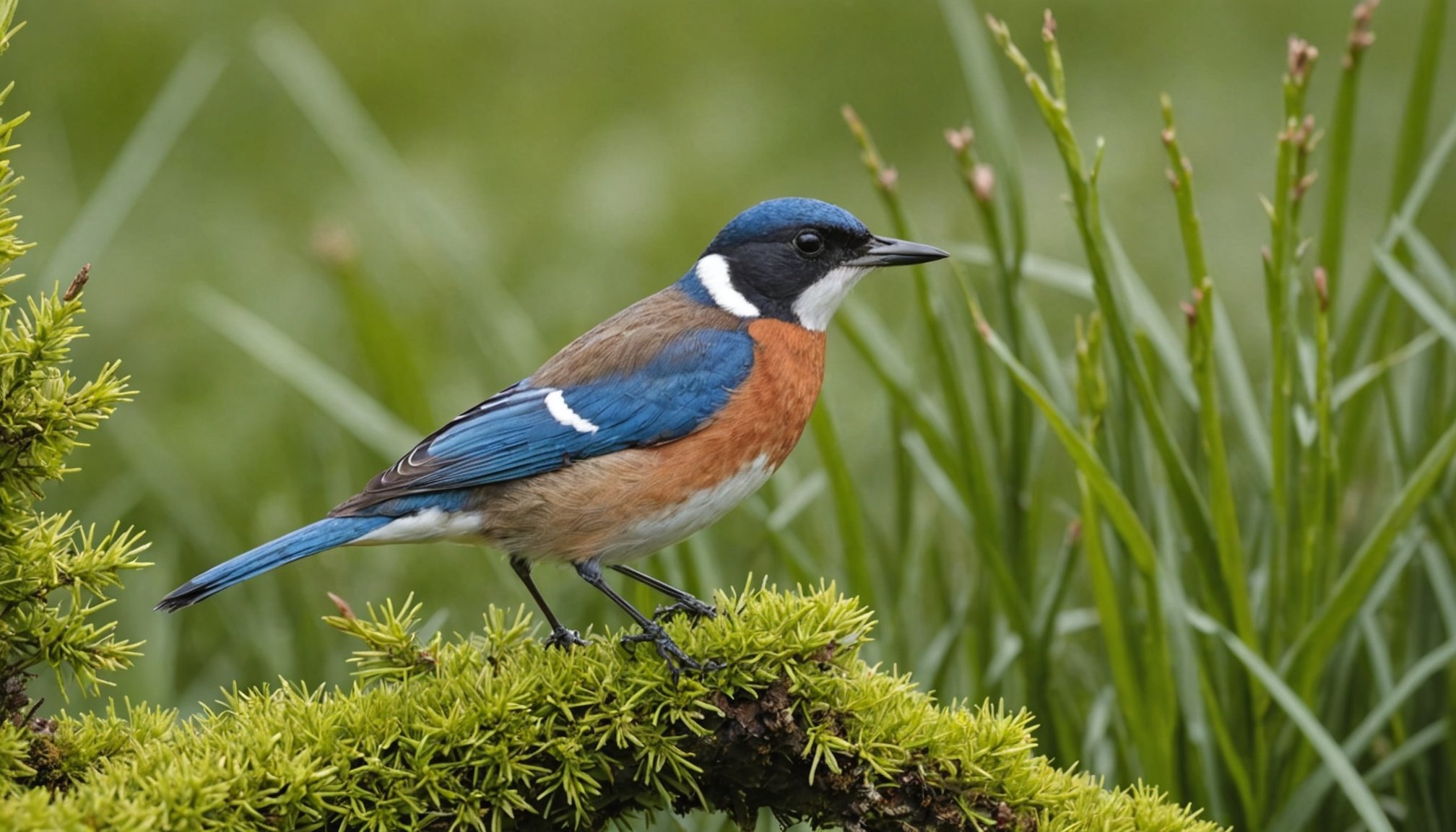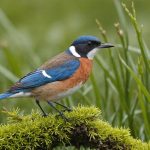Top Spring Birdwatching Spots in the UK: Discover Nature’s Best Avian Destinations
As the last wisps of winter dissipate, the UK transforms into a vibrant tapestry of life, with spring being one of the most exhilarating times for birdwatching. The arrival of migrating birds, the resurgence of song from resident species, and the blooming of flora all combine to make this season a paradise for nature enthusiasts. Here’s a guide to the best spring birdwatching spots in the UK, where you can immerse yourself in the beauty and diversity of Britain’s avian world.
Why Spring is the Best Time for Birdwatching
Spring is a magical time for birdwatching in the UK. As the weather warms up, the countryside comes alive with the songs of returning migrants and the vibrant colors of blooming flowers. Here are a few reasons why spring stands out:
Also read : Discover Authentic English Cider Crafting Experiences in Somerset: A Journey into Tradition
Migrating Birds
Spring marks the return of many migratory bird species that have spent the winter months in warmer climates. These birds, such as the swallow, swift, and warblers, bring with them a burst of energy and color, making this a thrilling time for birdwatchers[4].
Breeding Season
As the weather improves, many bird species begin their breeding cycles. This is a great time to observe courtship displays, nesting behaviors, and the first appearances of fledglings. The RSPB (Royal Society for the Protection of Birds) notes that spring is an ideal time to see birds in their most vibrant plumage[5].
In the same genre : Discover the Best Medieval Castle Reenactments in the UK: A Guide to Top Historical Events
Accessible Habitats
Spring weather makes many habitats more accessible. The thawing of frozen ground and the drying of wetlands open up areas that were previously difficult to explore, revealing hidden gems for birdwatchers.
Top Birdwatching Spots in the UK
North Wales: A Haven for Seabirds and More
North Wales is a treasure trove for birdwatchers, especially during the spring. Here are a few must-visit spots:
Rathlin Island
Located off the coast of Northern Ireland but accessible from North Wales, Rathlin Island is a seabird paradise. In the spring, you can spot puffins, guillemots, and gannets as they return to their breeding colonies. The island’s unique location makes it a key stopover for many migratory birds[4].
South Stack Cliffs
On the Anglesey coast, South Stack Cliffs offer breathtaking views and a chance to see seabirds up close. The cliffs are home to a large colony of guillemots, razorbills, and puffins, making it an unforgettable birdwatching experience.
East Anglia: A Region of Rich Biodiversity
East Anglia, encompassing counties like Suffolk, Norfolk, and Cambridgeshire, is renowned for its natural beauty and rich biodiversity.
Minsmere Reserve
Managed by the RSPB, Minsmere Reserve is one of the UK’s premier birdwatching spots. In the spring, you can see a variety of species, including the avocet, bittern, and marsh harrier. The reserve’s diverse habitats, from wetlands to heathlands, make it a home for a wide range of bird species[4].
Cley Marshes
Another RSPB reserve, Cley Marshes in Norfolk is a key spot for observing migratory birds. The marshes and coastal areas are perfect for spotting species like the Montagu’s harrier, spoonbill, and various warblers.
Forest of Dean: A Forest Haven
Located in Gloucestershire, the Forest of Dean is one of the UK’s oldest and most beautiful forests.
Cannop Ponds
This area is a hotspot for birdwatchers, with its mix of woodland, heathland, and wetland habitats. In the spring, you can see species like the pied flycatcher, redstart, and wood warbler. The forest’s tranquility and diverse landscapes make it an ideal spot for year-round birdwatching.
Nagshead Reserve
Managed by the RSPB, Nagshead Reserve is a gem within the Forest of Dean. It offers a chance to see birds like the goshawk, tawny owl, and various species of tits and finches.
Lake District and New Forest: Southern Gems
The south of England is home to some of the most picturesque and biodiverse areas in the UK.
Lake District National Park
The Lake District, with its stunning lakes and mountains, is a haven for birdlife.
Haweswater Reserve
This reserve, managed by the RSPB, is known for its peregrine falcons and ospreys. In the spring, you can also spot species like the dotterel and ring ouzel as they migrate through the area.
Ullswater
The second-largest lake in the Lake District, Ullswater, offers serene surroundings and a chance to see birds like the red kite, buzzard, and various waterfowl.
New Forest National Park
The New Forest in Hampshire is one of the UK’s most ancient woodlands, providing a unique habitat for many bird species.
Beaulieu Heath
This heathland area is home to birds like the Dartford warbler, nightjar, and woodlark. The New Forest’s mix of heath, woodland, and wetlands makes it a diverse and exciting spot for birdwatchers.
Keyhaven Marshes
Located on the coast, Keyhaven Marshes are a key spot for observing seabirds and migratory species. In the spring, you can see birds like the little tern, avocet, and various gulls.
Rutland Water: A Midland Marvel
Rutland Water, located in the heart of England, is one of the largest man-made reservoirs in Europe and a significant spot for birdwatching.
Rutland Water Nature Reserve
Managed by the Leicestershire and Rutland Wildlife Trust, this reserve is renowned for its ospreys, which return in the spring. You can also spot species like the bittern, marsh harrier, and various waterfowl. The reserve’s diverse habitats, including wetlands and woodland, make it a year-round destination for birdwatchers.
Practical Tips for Spring Birdwatching
Here are some practical tips to enhance your birdwatching experience in the spring:
- Early Mornings: Many birds are most active in the early morning, so it’s a good idea to start your day early.
- Binoculars and Field Guides: Always carry a pair of binoculars and a field guide to help identify species.
- Respect Habitats: Be mindful of the habitats you are visiting and respect any restrictions or guidelines to protect the birds and their environments.
- Join Local Groups: Joining local birdwatching groups or visiting nature reserves managed by organizations like the RSPB can provide valuable insights and access to expert knowledge.
Detailed List of Spring Bird Species to Spot
Here is a detailed list of some of the bird species you might spot during the spring in the UK:
-
Migratory Birds
-
Swallow
-
Swift
-
Warblers (various species)
-
Dotterel
-
Ring Ouzel
-
Montagu’s Harrier
-
Spoonbill
-
Avocet
-
Osprey
-
Resident Birds
-
Pied Flycatcher
-
Redstart
-
Wood Warbler
-
Goshawk
-
Tawny Owl
-
Various species of tits and finches
-
Bittern
-
Marsh Harrier
-
Red Kite
-
Buzzard
-
Seabirds
-
Puffin
-
Guillemot
-
Gannet
-
Little Tern
-
Various gulls
Comparative Table of Birdwatching Spots
Here is a comparative table highlighting some of the key features of the top birdwatching spots mentioned:
| Location | Habitats | Key Species | Best Time | Access |
|---|---|---|---|---|
| Rathlin Island | Seabird colonies, coastal areas | Puffin, Guillemot, Gannet | Spring, Summer | Ferry from Northern Ireland |
| Minsmere Reserve | Wetlands, heathlands, woodland | Avocet, Bittern, Marsh Harrier | Year-round | Car park and walking trails |
| Forest of Dean | Woodland, heathland, wetlands | Pied Flycatcher, Redstart, Wood Warbler | Year-round | Various car parks and trails |
| Lake District National Park | Lakes, mountains, woodland | Peregrine Falcon, Osprey, Dotterel | Spring, Summer | Various car parks and trails |
| New Forest National Park | Heathland, woodland, wetlands | Dartford Warbler, Nightjar, Woodlark | Year-round | Various car parks and trails |
| Rutland Water | Wetlands, woodland | Osprey, Bittern, Marsh Harrier | Year-round | Car park and walking trails |
Quotes from Birdwatching Experts
- “Spring is a magical time for birdwatching. The return of migratory birds and the vibrant colors of the landscape make it an unforgettable experience,” says Annette Salked, a warden at the North Suffolk Coast Reserves, RSPB.
- “The UK’s diverse habitats, from the seabird colonies of North Wales to the wetlands of East Anglia, offer something for every birdwatcher. Whether you’re a seasoned enthusiast or just starting out, there’s no better time to explore than in the spring,” notes a spokesperson from the Wildlife Trust.
In conclusion, the UK offers a wealth of birdwatching opportunities in the spring, with its diverse habitats and rich biodiversity. Whether you’re exploring the seabird colonies of North Wales, the wetlands of East Anglia, or the ancient forests of the New Forest, each location promises a unique and enriching experience. So pack your binoculars, grab your field guide, and get ready to discover the best of Britain’s avian world this spring.











